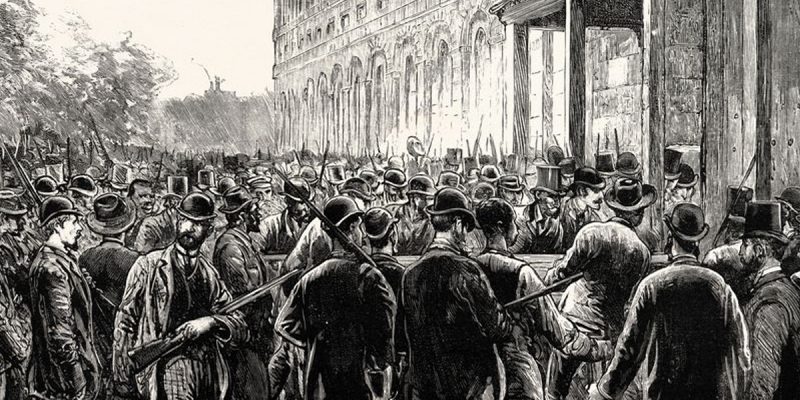From 1880-1920 the lower French Quarter was often called the “Italian Colony,” as over 60,000 Italians immigrated into Louisiana via New Orleans to take jobs on the docks, railroads, and plantations. They were brought to New Orleans under the auspices of Louisiana’s Bureau of Immigration to fill jobs vacated by newly liberated slaves and other African-Americans who migrated northward for better opportunities. Upon arrival in New Orleans, the Italians were met with fierce prejudice, which was exemplified in the lynching of eleven innocent Italians who were accused of killing the New Orleans police superintendent, David Hennessy. But despite their harsh treatment, the Italians persevered and help build New Orleans to the city it became, especially in the area of infrastructure.
On April 12, 2019, the Mayor of New Orleans formally apologized for the city’s involvement in those lynchings and issued a formal proclamation announcing that apology. Now, for two years the Italian Community has sought to erect historic markers to tell their story. It’s an honorable and natural thing to do.
Seven markers have been vetted by the State Tourism Office, which forwarded them to the LSU History Department for accuracy, before presenting them to the Louisiana Tourism Development Commission for the approval vote. One has been on erected at the on the grounds of the state Jazz Museum, formally known as the Old Mint at Decatur and Esplanade.
However, the City of New Orleans is not allowing the erection of the markers, which include one to Mother Cabrini. Mother Cabrini was sent to New Orleans after the lynchings for the express purpose of helping the Italian Colony, especially its orphans. At the January 5, 2021 Government Affairs Committee meeting, Charles Marsala, the President of the American Italian Federation of the Southeast, asked Council Members Kristen Palmer and Joseph Giarrusso to help with encouraging staff to permit erection of the Cabrini marker in Cabrini Park and other markers in the lower French Quarter.
Marsala made his comments under “Other Matters” on the Agenda. Rather than offer to help Marsala with city staff, Palmer opted to exercise the power of the chair and prohibit Public Comments on “Other Matters” in the January 21st Agenda. Why?
Advertisement
Louisiana Public Comment law is different from other states. The posted agenda for the Government Affairs meeting has a disclaimer: “NOTE: Public comment may be allowed for items not requiring a vote at the discretion of the presiding officer. Such comment may be subject to additional restrictions, limitations, and/or modifications to be announced by the presiding officer at the outset of the meeting.”
City Park has denied public comments at meetings using the same position of restricting Public Comments only to Items on the Agenda being voted on. Marsala has received no formal reason for the city’s denial. Marsala and other Italian Americans from New Orleans realize one thing about this very unique city. It isn’t a city—it’s a veritable museum which speaks to you as you walk or drive through its old streets. And like any other museum, it needs to be curated by people who care for its history. There are many stories echoing through out the city of New Orleans and they all deserve to be told. But the Italian story is a very unique on which, for some odd reason, people want to conceal.
It’s time for New Orleans officials to realize they are not just councilpersons, but curators of a very unique piece of American history. New Orleans is not like other cities. Indeed, Tennessee Williams once remarked, “there are only three cities in America—New York, New Orleans, and San Francisco—everywhere else is Cleveland.”
Advertisement
Advertisement

